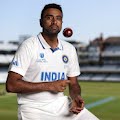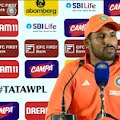When Sachin Tendulkar hangs his boots at the end of the Mumbai Test at Wankhede Stadium that is currently underway, it will not only bring to an end a glorious 24-year-old career, but will also put the curtains down on a very special era in international cricket. Over the two decades that Tendulkar has been associated with the Indian team, he has seen the side transform from one that were ‘tigers at home and lambs abroad’ to one that can compete well in all kinds of conditions against all opponents.
When Tendulkar made his debut in late 1989, the likes of Vengsarkar, Kapil Dev, Shastri and Srikkanth were at the fag end of their careers. As India entered the 90s, all of these big names retired, and Tendulkar was left to fight a lone battle with newcomers, with Mohammed Azharuddin as skipper. Anil Kumble made his debut in 1990 in England, in the same game that Tendulkar got his maiden hundred (at Manchester). But, it wasn’t until 1993 that Kumble actually established himself in the Indian side. Kumble, Tendulkar, Azhar, Sidhu and Kambli (briefly) were the cornerstones of India’s Test team.
The 1993 home series against England, which the hosts won 3-0, set a pattern for India. Tendulkar, Azhar, Sidhu and Kambli got the runs while Kumble along with support from Rajesh Chauhan and Venkatapathy Raju spun out opponents. Kambli faded away, but for the next few years, until the home series against Australia in 1997/98, this rest of the combination worked perfectly. However, this success story applied only to home conditions. Away from home, it was only Tendulkar and, to an extent Azhar, who could withstand the tough conditions and the challenging conditions during that era. The rest, including the experienced Kumble and Sidhu, struggled.
Sourav Ganguly, Rahul Dravid and VVS Laxman, who would go on to form the awesome foursome along with Tendulkar, all made their debut in the same year, 1996. But, it took a few years before they emerged as match-winners although Ganguly and Dravid had impressive starts to their Test careers in England. When India toured Australia in 1999- 00 under Tendulkar, all three were part of the squad, but it was only Tendulkar who stood tall. Dravid and Ganguly struggled while Laxman’s talent came to the fore during that amazing innings at Sydney when all was lost.
In effect, 2001 was the turning point in Indian cricket. Laxman, Dravid and Tendulkar combined with the bat to script the most amazing turnaround in India’s cricket history as India outdid Australia 2-1 at home. With the ball, Harbhajan Singh announced himself during the series. For the next few years, the combination of Tendulkar, Dravid and Laxman scripted astounding victories at home as well as away. Kumble and Harbhajan also formed a potent spin combination in most conditions.
Over the last half decade all these stalwarts have retired while Harbhajan has faded away, leaving Tendulkar as the lone man standing. And so, as the great man himself finally bids farewell, a phenomenal chapter in the history of ‘Team India’ draws to a close.
--By A Cricket Analyst














